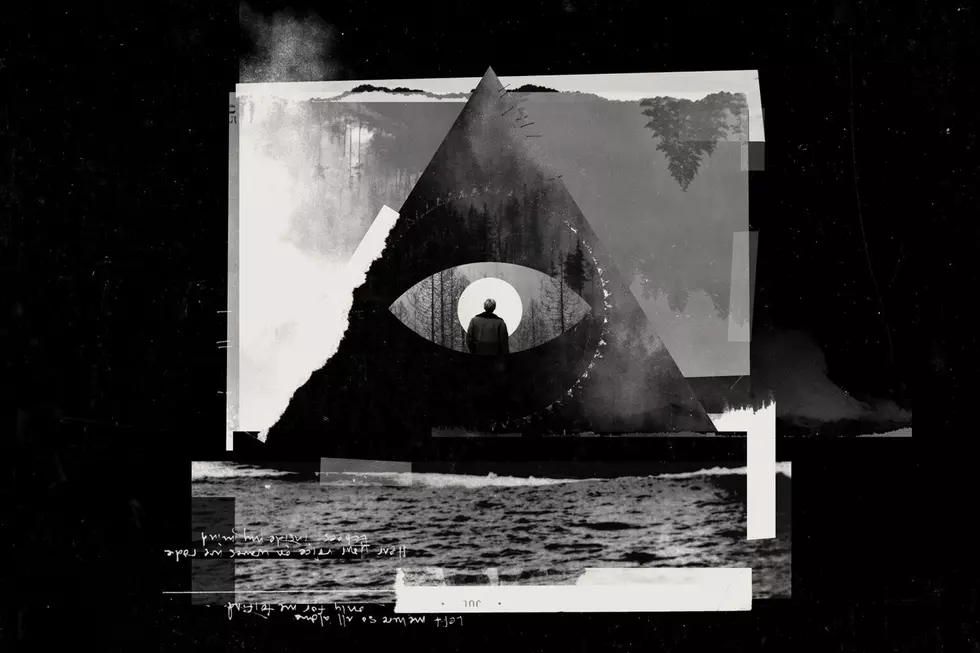
14 Years Ago: Alice In Chains Frontman Layne Staley Dies From a Drug Overdose
The grunge generation mourned one of its most iconic voices 14 years ago, after Alice In Chains frontman Layne Staley was found dead from a drug overdose in his Seattle home. Staley is believed to have died alone, and it was roughly two weeks before his body was discovered; it is estimated that the brilliant, yet troubled singer passed on April 5, 2002 – eight years to the day that it's believed Kurt Cobain committed suicide.
The news of Staley's death came as both shock and sad inevitability. Many of those close to him had long feared for his health, as he’d grown visibly pale and emaciated in recent years, while also becoming highly reclusive. Tragically, the Seattle arts bi-weekly The Rocket reportedly had Staley’s obituary on standby since the late '90s. That April in 2002, that dreaded day finally arrived.
Staley – who co-founded Alice in Chains in 1987 with guitarist Jerry Cantrell – had achieved widespread success with the band, who were a vital member of Seattle’s “Big Four,” alongside Nirvana, Pearl Jam and Soundgarden. His trademark vocal style and the stunning harmonies he created with Cantrell defined not only AIC’s body of work during the '90s (three beloved multi-platinum albums and three increasingly artistic EPs), but also inspired a slew of imitators who followed him. But while even Scott Stapp could do a rough approximation of Eddie Vedder's voice, most of the wave of Alice in Chains wannabes only reinforced that there was and would always only be one Layne Staley.
After a string of canceled tours and trips to rehab during the early to mid-‘90s, Staley’s downward spiral of depression and drug use had accelerated by 1996, when he performed his last shows with the band, including the recording of the now-classic 1996 MTV Unplugged album. No one knew it then, but his final appearance with AIC was July 3, 1996 in Kanas City (supporting KISS). Later that year in October his former fiancée, Demri Lara Parrott, died from bacterial endocarditis—a secondary complication from drug use –and Staley was so distraught, he was on suicide watch. It was the beginning of the end.
What happened next is hazy at best: In 1997 Staley purchased a 1,500-square-foot, three-bedroom condominium in Seattle’s University District and spent the remainder of his life as a recluse. He was still somewhat active through 1998, popping up occasionally to help with scattered new AIC material, make the occasional guest album contribution or to attend a show: like on Halloween 1998—his last known public appearance—when he turned up at a Cantrell solo gig. But from 1999 to his death in 2002, he retreated almost completely; very little is known about how he spent those final years.
While we know Alice In Chains producer Toby Wright had installed a home recording studio in Staley’s condo, the rest is mostly scattered. Those closest to him say the years consisted of creating art, playing video games, getting high, then nodding off. But he rarely answered phone calls and visitors said they were generally ignored. AIC drummer Sean Kinney would try to check on Staley roughly three times a week, with little success. Toward the very end of Staley’s life, perhaps once a week, he’d reportedly stop into a local bar called the Rainbow, where he’d just sit at a table in the back corner, passed out.
Staley was so withdrawn from the world, it wasn’t until his accountants noticed that he hadn’t spent any money in two weeks that anyone noticed anything was wrong. On April 19, Staley’s mother gave Seattle police permission to kick in the door to the singer’s condo, where they found an 86-pound Staley dead on his couch. The police report said his TV was still on, spray paint cans littered the floor and Staley was surrounded by drugs, including a small stash of cocaine, two crack pipes, a syringe stuck in his leg and another fully loaded needle in his hand. After an autopsy, it was determined that Staley likely died of a mix of heroin and cocaine on April 5.
In the ensuing years, many of Staley’s inner circle would question if they could’ve done more to help, including his bandmates. Former AIC bassist Mike Starr spent much of the next decade blaming himself for Staley’s death. He told his story in 2010 on Celebrity Rehab with Dr. Drew. Celebrating his birthday on April 4 in 2002 – the day before Staley died – Starr visited with him and was reportedly the last person to have seen Staley alive. Starr always regretted not calling 911 after seeing his friend’s deteriorating condition.
The bassist said that in that final meeting, they’d argued, in part over Staley’s refusal to get help. Starr said Staley threatened to end their friendship if he called 911, so Starr stormed off. Starr said Staley called out to him as he was leaving: “Not like this. Don’t leave like this.” Two weeks later, Staley was gone.
Starr apologized to Staley's mother on the show, but she refused to blame him. She said Staley had attempted rehab 13 different times. “Layne would forgive you," she told Starr. "He’d say, ‘Hey, I did this. Not you.’” But Starr never could accept that. He too died of an overdose, the following year.
Although Staley died 22 years ago today, the world wouldn't know for two more weeks until the King County Medical Examiner positively identified Staley’s body on April 20. In what had become an all-too common occurrence, an informal memorial service was held that day at the Seattle Center – the same place fans gathered eight years earlier to mourn Cobain. More than 1,000 people attended the memorial service for Staley, including Staley’s former bandmates Cantrell, Starr, Kinney and bassist Mike Inez, as well as Soundgarden’s Chris Cornell.
Still, Staley's legacy burns just as bright. It’s difficult to imagine modern rock without the influence of Alice In Chains, particularly Staley’s trademark croon. He's been posthumously honored and memorialized in songs by everyone from Pearl Jam to Black Label Society; even by Alice In Chains—who reformed in 2006 with William DuVall on vocals, partially in remembrance. The title track of 2009’s Black Gives Way To Blue, AIC’s first new album in 14 years, was written specifically as a tribute to Staley.
More From Diffuser.fm









